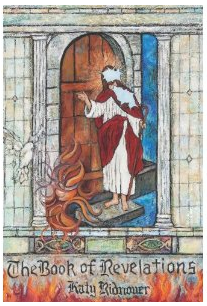
The narrative follows Addie from her near-death at age 14 until November of 2012. The reader spends most of the book inside Addie’s head, but never really gets to know her. This is not a failure on the part of the author, but is, I think, an astute portrayal of a character who is, in some way, dead. Addie often refers to her own “murder” and thinks of herself has having died that day in the bombing. The book is the long, sometimes painful, often benumbed journey of Addie’s “death” to her rebirth. She represents both the national experience of African-Americans and a more universal human experience.
If I have a problem with the book, it is with the portrayal of the black community that Addie represents. The black characters the author chooses to develop are portrayed, for the most part, as semi-literate and simplistic. Ridnouer’s portrayal of the black characters, particularly the ones from Birmingham, are almost caricatures — and caricatures of the wrong culture. Addie’s language seems less evocative of urban blacks than of rural whites. She describes someone giving her a shoebox “special collected from food brung over by the neighbors.” When Addie’s mother sends Addie away for her own safety, Mrs. Collins reluctantly agrees to write, adding “you know I ain’t no good.” And indeed, the first letter she writes, with the help of one of the other children, is the work of someone barely literate. George, a character who becomes a minor hero (in a subplot that is an interesting twist on To Kill A Mockingbird), is certainly no Uncle Tom, but nonetheless manages to evoke that image. Most of the story involves these characters, but it would have been nice to have heard more from the articulate, well-educated blacks who were so much a part of the civil rights movement.
By the end of the book, as Addie grows up and deals with the racial issues of subsequent decades, the problems with characterization become less vexing. In the end Ridnouer delivers an engaging story of an inspiring woman who makes the difficult journey from victim to hero. What is most satisfying about this book, however, is the more profound journey Addie makes: from death back to life.
Links
Previously on SPR: Hillwalking
Get an Editorial Review | Get Amazon Sales & Reviews | Get Edited | Get Beta Readers | Enter the SPR Book Awards | Other Marketing Services






















This is why character development is so important- it has to be realistic, believable. Even with a historical character- you have to research the person, the culture, the time period. You have to think of how realistic things would be- it’s what I had to consider while writing “Judas the Apostle.”
Van, I’d love to know what you think once you’ve read the book. Check it out this weekend for free via Kindle. Thank you for taking the time to respond.
Katy Ridnouer, author